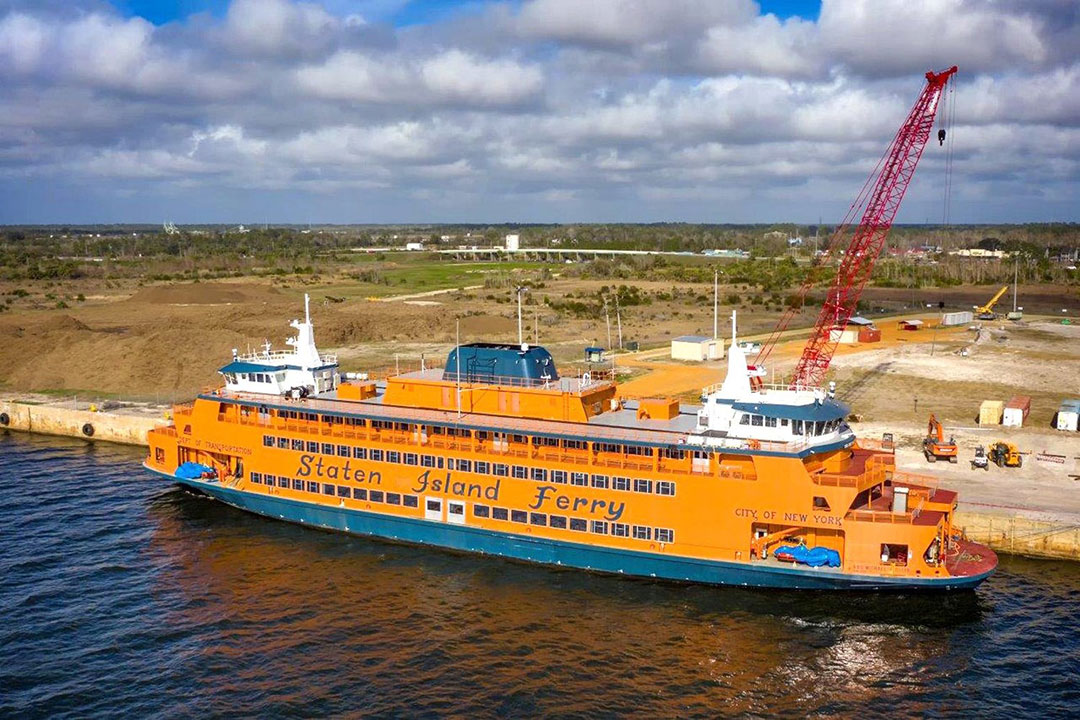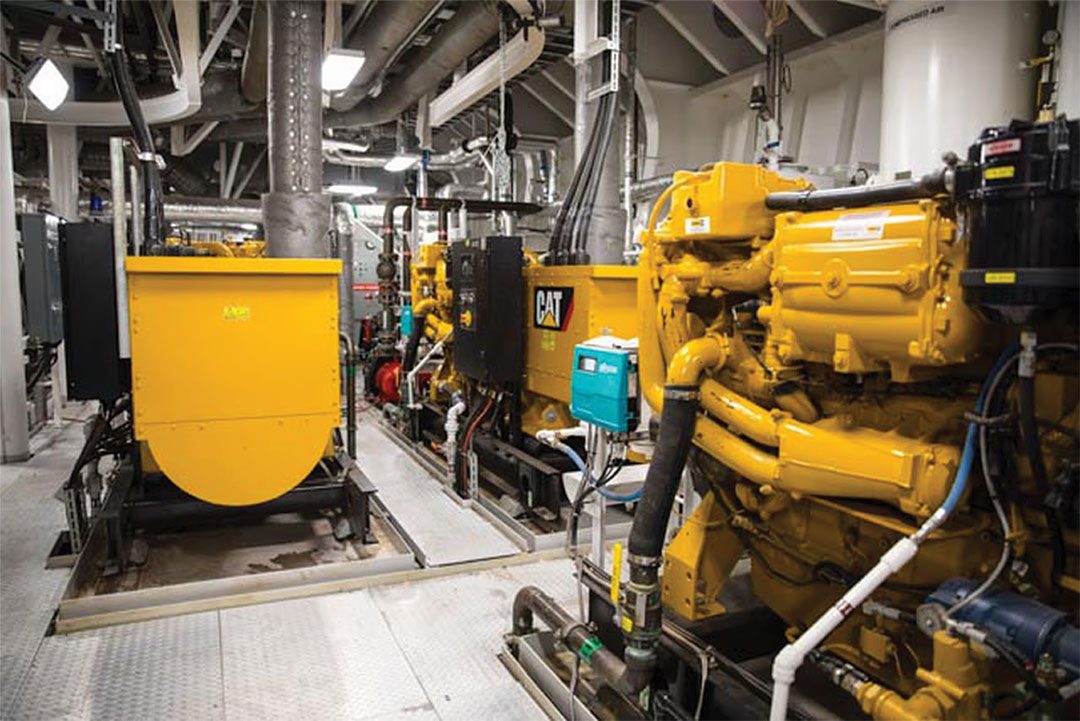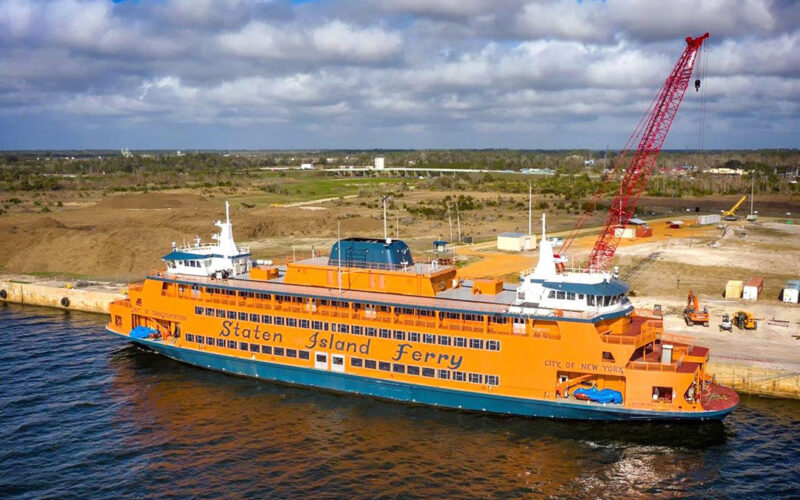
On May 1, 2023, the New York City Dept. of Transportation introduced the 4,500-passenger 320’ MV Dorothy Day to its iconic free Staten Island-Manhattan ferry service marked the successful end to a long and unexpectedly challenging journey.
It all began in 2009 with preliminary design studies that culminated five years later with the selection of the Seattle-based Elliot Bay Design Group to produce a complete contract package for a new class of ferries for the agency.
The specifications included Tier 4 engines and numerous emergency access features to support evacuation and rescue procedures developed in the aftermath of 9/11 that included midship side doors to connect to local fire and response boats, and 4,000 lbs. anchors and winches at both ends of the vessels.

Eastern Shipbuilding in Panama City, Fl. was awarded the contract on March 1, 2017, with Glosten Associates of Seattle serving as the owner’s representative.
By October 2018, two hulls had taken shape at Eastern Shipbuilding’s yard when the facility was seriously damaged when winds of up to 160 mph generated by Category 5 Hurricane Michael slammed into the Florida Panhandle.
Remarkably, work on the ferries fully resumed by the end of the year, and the first vessel was launched in November 2019, with a new delivery date of August 2020. But, by then, COVID-19 had struck, and the delivery date was moved ahead yet again.
The first ferry – MV SSG Michael H. Ollis – was towed to New York in August 2021 and entered service on February 14, 2022, to a positive reception for the major improvements that had been made over previous ferries in comfort, safety, and amenities including improved seating availability, numerous cellphone charging outlets, an elevator available for passengers with limited mobility, an upper deck walking track, and decks that are de-iced in the winter by using engine-generated heat.
MV Sandy Ground, the second ferry in the Ollis-class, was launched in June 2020, delivered at the end of December 2021, and joined the fleet in June 2022, while MV Dorothy Day, the third member of the ferry trio, was launched in March 2021, and delivered in September 2022.
Throughout the process, from design to delivery, every detail of the ferries’ engineering was studied by a technical advisory group led by KPMG and evaluated by the Elliott Bay Design Group.
After extensive research on numerous propulsion options – azimuth drives (ASD’s), Voith Schneider cycloidal propellers (VSP), and controllable-pitch propellers that included both mechanical and diesel-electric transmissions, and three modern systems – the team settled on a single VSP installed at each end of the ferries.

Engines from Electro-Motive Diesels are standard in the Staten Island fleet and each of the Ollis-class ferries powered by four EPA Tier 4, 12ME23B engines with a pair at each end connected to a single propeller shaft via a single Reintjes DUP 3000 P combining gear. A fully integrated exhaust treatment system utilizes diesel-exhaust fluid, a combined SCR chamber, and an easily accessible catalyst circulation container. Electronic Marine Systems manufactured the PMS 9000 engine room monitoring system.
Electric power is provided by rated at 425 kW at 0.8 P.F. at 1,800 rpm. Twin pilot houses with identical controls are positioned at ends of the 04 deck, which is accessible only by the 16-person crew, while both bridges have stations for the captain, helmsman, navigator, and lookout.
Navigation and communications capabilities are supplied by four Furuno XN20AF radars and GP170D GPS, and Transas NS4000 plotters. Coastal Marine 1A17-150X1-135-00 anchor winches and C14-10-61-21 mooring capstans are positioned on deck, as are four Willard Marine Sea Force 490 rescue boats.
The double-ended hull was tank-tested at the Maritime Institute in the Netherlands and refined to improve fuel efficiency at the higher service speed of 16.3 knots necessary to handle a predicted increase in daily passenger count from 35,000 to 40,000 passengers. •

